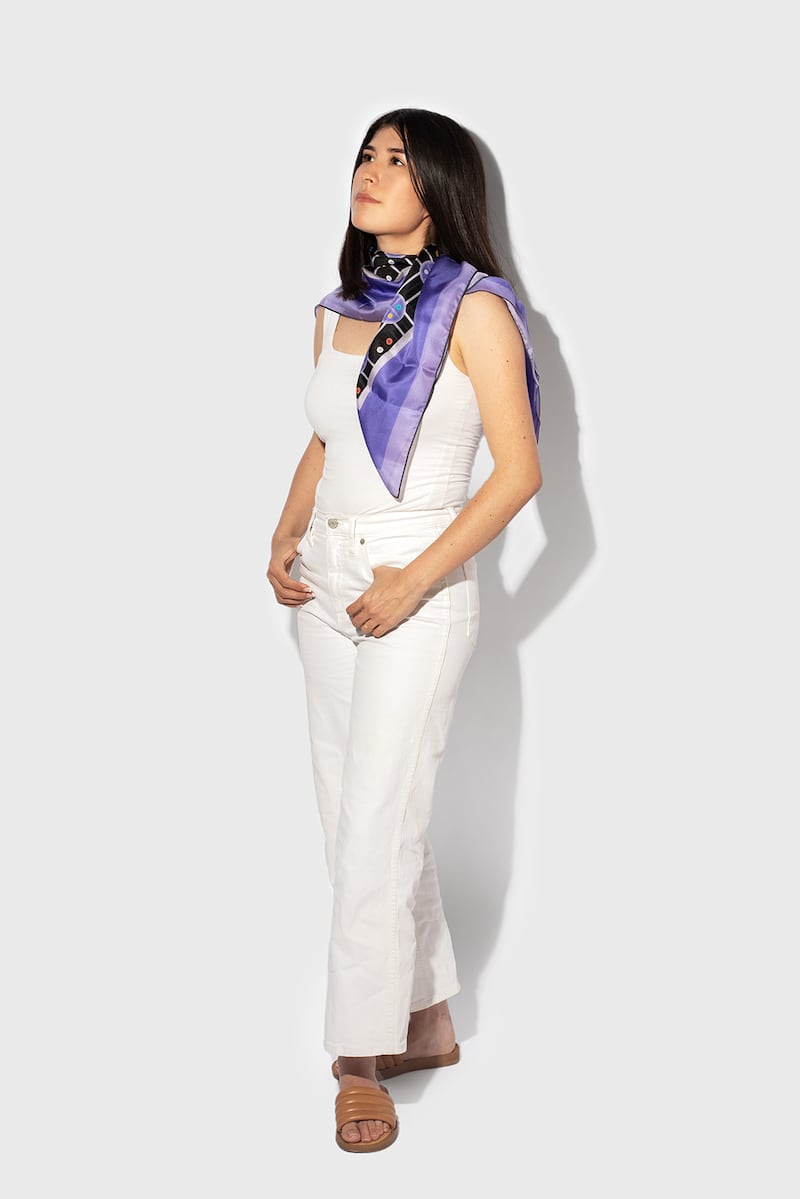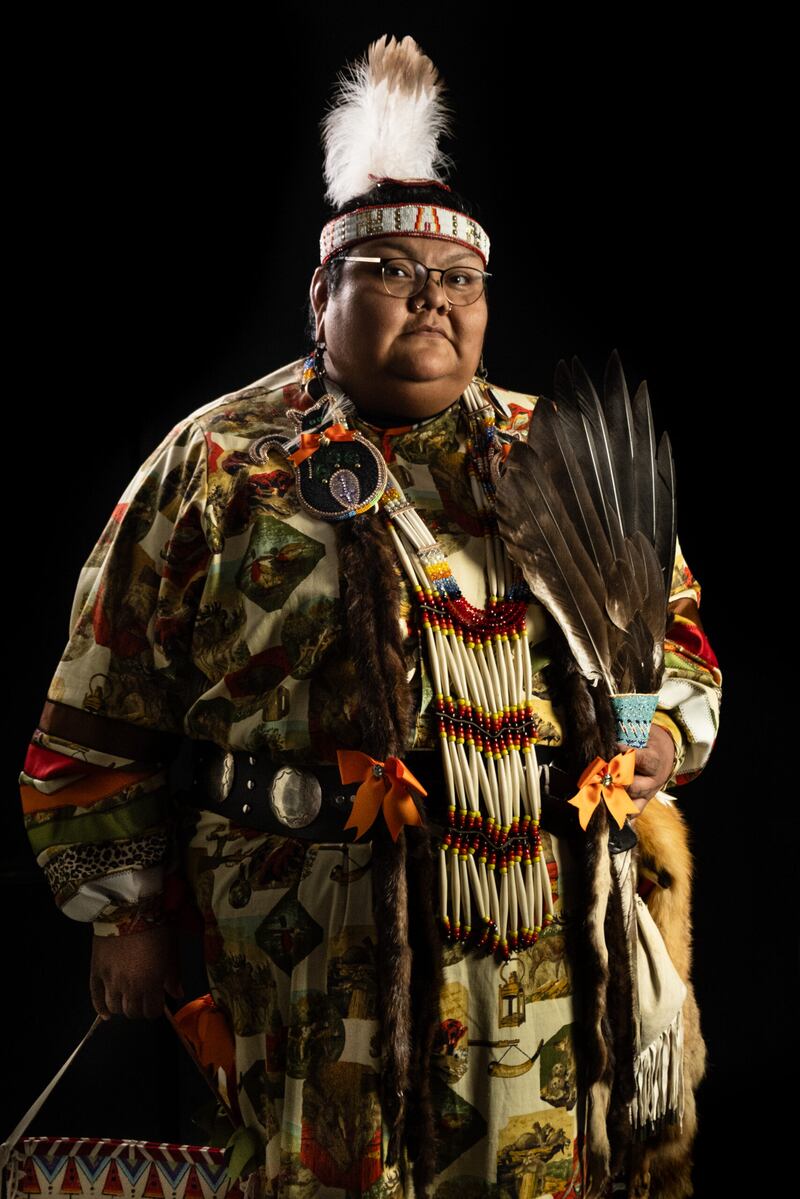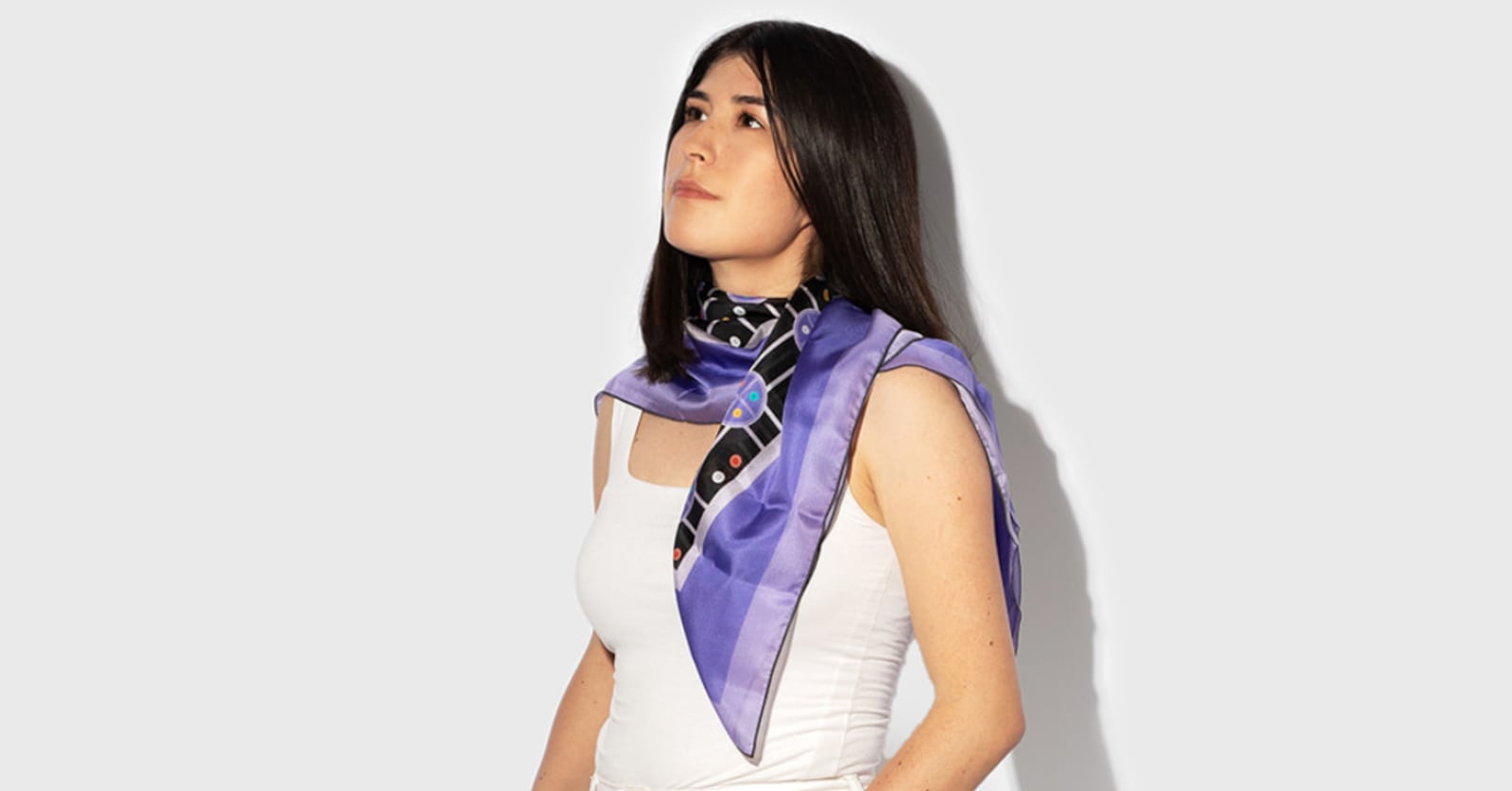
Photo of Jessica Wiarda by Jessica Ethington
Earlier this year, Hopi-Tewa artist Jessica Wiarda coordinated and launched Utah’s first Indigenous Fashion Week. In 2024, she’s doubling down.
The idea for the event was initially sparked in casual conversation. “The Navajo Nation has their own fashion week,” Wiarda says. “One of my friends suggested offhand that we do that same thing here, but with the mix of community members living in Salt Lake City.”
Wiarda told her friend group that she was serious about hosting a fashion week, and the name alone was all it took to get people on board.
“Immediately, there were volunteers,” Wiarda says. “Friends called friends who called other friends, and soon we had models, designers, artists—even an emcee. It got bigger and bigger completely organically.”
Opportunities for self-expression
When Crystal Loya, a Redhouse Diné designer, was asked to participate in Indigenous Fashion Week, she had just finished some dresses and completed some beadwork from the powwows she’d attended, she says. Initially, Loya assumed she’d be designing for other models—but then Wiarda asked her to represent herself.
“I was shy at first, just humbled to be a part of something like this,” Loya says. “As I walked, my shyness turned into, ‘Okay, I got this, this is me. This is my take on powwow: a contemporary northern traditional cloth dancer.’ After it was all done, I was proud. Proud of myself, as an Indigenous woman. Proud to participate, then get elevated to showcase in an all-Native fashion show. Proud to support and elevate the Native community here on the Wasatch Front.”
Though her mother loves to sew, Loya didn’t pick up the skill until a middle school home economics class, where she learned to work the machines.
“[My mother] gave me the work ethic of, ‘If you want it done, do it yourself,’ and that’s [become] my motto for when I can’t find something already pre-made or that fits,” she says. “That has led me down a path of making my own regalia.”
Not every volunteer was an experienced designer, though. Wiarda says many people she called were creating clothes and modeling for the first time.
“All of our models had never modeled before,” she says. “People were really inspired, and I think they just trusted me.”
Photos by Gabriel Rutherford
The Leonardo had confidence in Wiarda, too, allowing her to reserve a space with a cap of 250 attendees. The tickets sold out in a weekend.
“People were still coming to the front desk trying to get tickets the day of,” Wiarda says.
A gathering of nations
Wiarda was selected as the Utah Diné Bikéyah’s Artist in Residence in 2022, and she used the remainder of her stipend to fund the fashion week. Ticket sales covered the rest of the expenses—Wiarda ran everything without sponsorships or external funding.
In 2024, that’s going to change.
“We already have sponsorships lined up,” she says, even before having the exact date, location or even artists nailed down.
Wiarda largely credits the event’s success to creating a feeling of belonging. At the first fashion week, half a dozen tribes—including Hopi, Navajo (Diné), Ute, Northern Ute, Apache and Anishinaabe Ojibwe—were represented.
“One of the elders described it as ‘a gathering of nations,’” Wiarda says. “I felt really good about that. It didn’t matter what tribe you were from at this event. We are Indigenous.”
That’s an especially rare feeling in Utah, she continues.
“As an Indigenous person in the state, you know people like you exist, but we’re rarely brought together in one place. The whole night was full of people gasping, ‘I didn’t know you’d be here!’ and hugging and making friends. It made me realize that we’re more connected than we might feel. We have a huge community.”
Not all the attendees were Indigenous, though. Wiarda encouraged people from all backgrounds to buy a ticket.
“It’s hard to create safe spaces for people to consume culturally specific content,” she says. “That’s the way our social climate is now. People are afraid to ask questions. I think this is especially true in Utah, where one culture is dominant.”
This social climate has snowballed into what Wiarda calls a “misunderstanding about ‘Indian Art’” here in the state.
“When I was working at a booth at Craft Lake City, I’d see white couples say they couldn’t buy my work because it would be appropriation,” she says. “You can buy these Native-made garments because they’re marketed toward you. Something that is specific to a certain tribe is a different story, but in general, we don’t want to rope ourselves off.”

Crystal Loya | Photo by Neil Larson
Expanding horizons
That welcoming attitude is now materializing as a large event. In 2024, Wiarda says she hopes to sell 500 tickets.
“I don’t know what ‘realistic’ is anymore,” she says. “I thought 250 would be a stretch.”
With the luxury of more than five weeks to plan and secure sponsorships, Wiarda says she’s putting everything into making 2024’s Indigenous Fashion Week worthy of a doubled attendance number. So far the agenda includes additions such as a separate art market where designers can present and discuss their work before selling it, a series of smaller fashion shows instead of one large one, and an artist feature series.
As a designer, Loya wants to step up her game, too.
“It would be pretty cool to bust out a line for next year’s walk from regalia to everyday wear,” she says. “The regalia would need to be hand-picked—I don’t just sew outfits for anybody. It’s a rite of passage, regalia in the powwow world. I sew and bead for the ones who have no one [to do it for them].”
An everyday wear line would be an even bigger lift for Loya, and she estimates the cost of materials to be high.
“I’m only one person beading, sewing, sourcing fabrics and supplies,” she says. “The challenge would be epic but so worth the end result.”
Empowering the next generation
This kind of celebration has been generations in the making, Wiarda says.
“A lot of Indigenous communities are really reserved when it comes to sharing anything,” she continues. “If you go back to my grandparents’, or even my parents’ generation, they were punished harshly for speaking their language, for expressing themselves in clothing or hair. This new generation, we inherited that trauma, but it’s not something we’ve experienced. We’re not as afraid anymore.”
Throughout the process of creating Indigenous Fashion Week, Wiarda says the biggest lesson she’s learned is the importance of self-confidence.
“You might think you’re not ready to show your artwork, to start designing something, to try anything new,” she says. “But if you want something, you should do it. I’ve seen first-hand how possible your dreams can be.”

